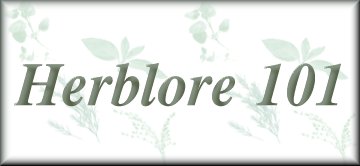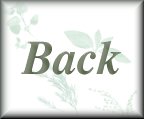

|
TERMS AND METHODS OF PREPARATION - INSTRUCTIONS |

|
Herbs are processed in different ways. To eliminate later questions when we get down to individual recipes, lets look into the mystery of ‘plant’ talk and to decipher the difference between such things like Tea, Decoction, Infusion, Extract, Tincture, Poultice, Lotion, Salve, and many more. Keep in mind that whatever you process or prepare, most herbs loose properties when coming in contact with cheap metal. In a perfect world, we would have access to wood and stone supplies, but in real life, we often have to choose the lesser evil, which in this case is stainless steel (although metal, it won't give particles off, like copper and other materials would). Remember, the times given here as examples are only rule by thumb, and can vary greatly with each individual plant.
Herbal Formula: A combination of two or more herbs. A Simple: A single herb (root/bark/seed) preparation. |

! Fill herbs loosely into a glass bottle, cover with alcohol (at least one extra inch), and sunsteep (or keep near the stove, should get around 68F) for 14 days or longer (I prefer at least one full moon cycle), shaking daily. Strain and squeeze out the residue. Tinctures are taken internally, but by the dropperful and often diluted in herbal teas. Store in a dark colored glass bottle. Some tinctures get stronger with age (i.e. SwedenBitters!). I found that sun steeped tinctures possess more magickal healing powers then stove steeped, although traditionally it is often advised to keep them in a dark cool place WHILST steeping. For most, I adhere, but special formulas I still place in the sun. They ‘feel’ different, more potent. Shelf life from 2 years to indefinite. Tip: If given to children or the elderly, dropped into hot tea (not boiling) the alcohol evaporates within a few minutes, leaving only the herbal components. 4-8 hours in front of a fan in a shallow bowl have the same result. |
! Equal parts glycerin and distilled water are used, or 60% glycerin/ 40% water. Prepare as you would tincture. Shelf live is not as long, and not all plants and/or parts can be glycerated, but it makes an option for children’s medication and greaseless lotions. |
! Cover chopped plant material with warmed organic apple cider vinegar in a glass bottle. Macerate for 4-6 weeks. Shake extracts daily. Strain, press pout residue, and store in glass bottles. Best stored to prevent mold. |

! Herbs are cut small and placed in a non-metallic container. Then boiling water is poured over them. Letting them ‘sit’ is called steeping. Dosage: 1 teaspoon per 1/4 liter (1 cup) of water. Steeping time differs on the plant part used and the properties you want to extract. Generally, herbs take 10-20 minutes, roots and bark 20-30 minutes. TIP: Keep daily requirement in a thermos when a recipe calls for i.e. two sips per hour. |
! Roots or bark (usually chopped) and seeds are placed in cold water, brought to a boil, and steeped as individually required. |
! Steep in cold water for 12 hours (overnight) and carefully warm only to drinking temperature. Strain, then pour boiling water over the remaining herbs/roots and steep for 10-20 minutes and strain again. Allow to cool and mix with the cold infusion to extract the most possible active substances. |
! Place herbs in a glass jar or bottle with cool water, place in the sun for a few hours to days. Compared to hot infusions, these seem more alive ad pleasant, with subtle flavors and increased plant spirit, as well as adding the magickal power of the sun. For you moon lovers, same principal :) |
! Cover herbs with cool water, cover pot, heat to a slight bubble and simmer for 20 minutes (minimum) to 1 hour, then remove from heat and let steep covered for one hour to overnight. Strain and store in fridge. Shelf life a few days. For extended shelf life, add vegetable glycerin. |
! Use 16 oz of distilled water to 4 oz of herbs. Soak herbs 4 hours or more, then simmer on very low heat in covered saucepan or double boiler for 30 minutes. You now have a decoction. Strain decoction into uncovered clean pan and simmer down (concentrate) to 1/4 of the original amount. The end result should be 4 oz of extract. Keep refrigerated or use natural anti-oxidants like vegetable glycerin, or a little alcohol (20 % is generally believed to ensure shelf life), for example. |

! Pick flowers without touching the petals with your bare hands-- then Solar Infuse. |

! Boil water and pour it steaming hot over herbs in a ceramic or glass bowl, and when cool enough to prevent scalding, inhale the herbal steam with a towel covering your head, forming a tent over the bowl. Or put a paper bag over the bowl with a hole to inhale through. This is most often done with essential oils (added), by the way, to clear stuffed sinuses. Very effective. |

! Make a tea/infusion/decoction, depending on your time (the longer the stronger, but for eyes, for example, you might not want it too strong), allow to cool, and either wash with a clean cloth, or apply as a compress with said cloth. Fastest and safest relieve for conditions like pink eye or nettle fevers. Note: Always use freshly-boiled water for each dose! Discard any leftovers and make new wash from scratch for each dose. What you CAN do is make one large batch, store in the fridge, and only take out what you need for each application. For burns and pain the added cold adds analgesic effects. |
! Heat and strain the next morning and poured into bath water (for heat sensitive herbs, use the cold infusion instructions and keep bath water lukewarm). Use giant ‘tea bag’ system to avoid clogging the drain with loose herbs. Sit in it 20 minutes, kidney area must be covered (the heart is usually OUT of water). Don't towel off, wrap yourself in a terry robe and go to bed, covering warmly, for at least one hour. Water can be rewarmed and used twice more. |

! Bring water to a boil, place a sieve with the cut herbs over (not into) it, and cover. The softened, warm herbs are placed on the affected part on a light woven cloth (I prefer thin linen) and covered with a warmer cloth, then bound/affixed. Left from 1 hour to overnight depending on the herb and treated condition. |

! Fill a glass bottle with the herbs and cover with cold pressed (virgin, native, extra, first pressing, organic) olive oil or one of the many other carrier oils, depending on the intended use, like jojoba or sweet almond. Keep in a warm (sun or near stove) place for a at least14 days. Don't strain when starting to use, just take what you need. For most oils get stronger the longer the plants are left, of course. You can also exchange the herbs for fresh ones. NOTE: Beware of juicy ingredients (i.e. garlic, onions, berries, fleshy stems and leaves like comfrey), some need to be roasted or steeped before use, otherwise fermentation can occur and you have botulism or some other nasty anaerobic bacteria multiplying in there. Gas bubbles in preserves are not good news. When using fresh herbs, I use a double burner or crock pot and steep them on very low heat for 3 days, exchanging the herb daily, then let the last batch sit for months in a tightly capped bottle, with a handful of dried plant material added for extra oomph. Never mix strained oils with pressed oils, the pressing contains more water and will spoil faster. Keep separately and use the strained residue first. |

! Quickly heat unsalted butter or clean lard, insert finely chopped herbs, and let crackle briefly, stirring around. Remove pan from fire, cover, leave overnight. Next day, warm up lightly and press through linen cloth into glass jars or ointment pots. Refrigerate. (Keep small jar for daily use and refill from fridge-storage container as needed). |
! Slowly warm infused oil and melt the other ingredients, stirring often while the mix is setting (was has a tendency to form rings on top). When cool, add essential oils (NEVER before, they loose all potency when heated). Fast fix: Simmer herbs in oil in a double boiler for 30-60 minutes, strain, add wax. Not as potent, but better than nothing. |

! Thicken with slippery elm powder, and knead until it becomes the texture of bread dough. Roll into small balls. They can be dusted again with slippery elm powder to reduce stickyness. Dry in the oven on VERY low heat or the in the sun, using a cookie sheet and baking paper, store in tightly closed container in a cool place. |

! Place herb powder in a shallow bowl and fill separated caps by gently grinding the open halves into the herbs. Then stick the two halves together, closing the capsule. The standard dose is 1 “00” size capsule for adults. One ounce of powdered herb fills about 30 capsules. |

GSE (grape seed extract) - antimicrobial, antiseptic, antibacterial, astringent, antioxidant Propolis tincture - absolutely, positively anti-EVERYthing :) Vitamin E / Tocopherol (T-50): - antioxidants Benzoin gum tincture - anti-fungal Myrrh e.o. - anti-fungal |


